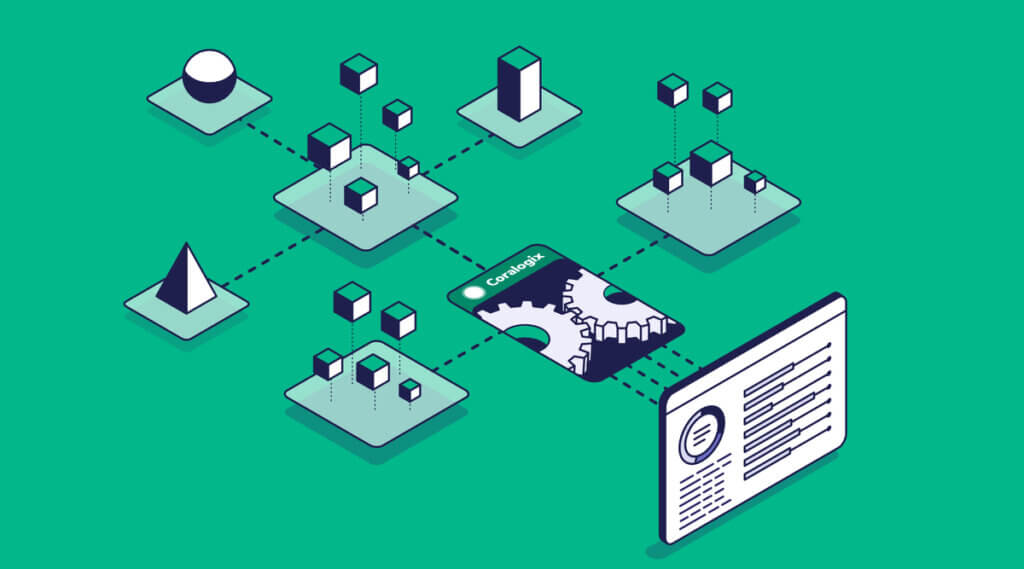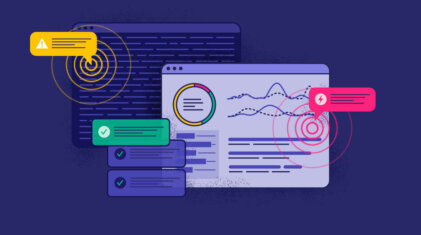Understanding the Three Pillars of Observability
Data observability and its implementation may look different to different people. But, underneath all the varying definitions is a single, clear concept: Observability enables you to…
Whether you are just starting your observability journey or already are an expert, our courses will help advance your knowledge and practical skills.
Expert insight, best practices and information on everything related to Observability issues, trends and solutions.
Explore our guides on a broad range of observability related topics.


Businesses are increasingly adopting distributed microservices to build and deploy applications using cloud cost optimization. Microservices directly streamline the production time from development to deployment; thus, businesses can scale faster. Coralogix helps you optimize business cost and enterprise application monitoring performance.
However, with the increasing complexity of distributed services comes visual opacity of your systems across the company. In other words, the more complex your system gets, the harder it becomes to visualize how it works and how individual resources are allocated.
In such cases, cloud instances are prone to overallocation and downtimes if they are not appropriately managed. According to a study conducted by the DEJ, the average cost of not managing cloud performance effectively is $24.8 million.
So, how do you keep up with a modern system while ensuring your business bottom line is not affected? Observability is key.
Simply put, observability is the capacity to gauge a system’s health using the data it generates, such as logs, metrics, and traces. As a system becomes more observable, it becomes easier and faster to make business decisions or pinpoint any potential areas of concern.
According to Gartner Analysis, 70% of organizations that successfully implement observability will be able to make decisions much faster by 2026.
In this next section, we’ll look at the true impact of business observability.
An analysis by InsiderIntelligence found that major IT and software businesses saw a massive increase in outages in 2022, and what’s more is that the time taken to resolve these outages has also grown significantly.
The biggest cost of outages and downtimes comes from losing the trust of your customers or users. Nobody wants to do business with an unreliable company. That’s exactly what observability helps you avoid.
With proper visibility into your systems, you can resolve incidents faster and predict and prevent them from happening. Observability also helps reduce the frequency of SLA violations as you avoid downtime.
For example, downtime can occur if your cloud storage container for a particular function is full and therefore takes longer to provide requested resources. With Coralogix’s dashboard, however, you can easily keep track of such a simple metric as the storage capacity of your cloud containers through logs. And you can even set up automated alerts to let you know if you’re running low on container storage.
Speaking of container storage, observability can also help you determine if you even need specific cloud containers. This brings us to the next point…
One of the biggest symptoms of an opaque system is the presence of redundant architecture. Due to your inability to properly monitor every resource in the system and how they are deployed, you inevitably end up commissioning more than you need.
As part of the cost of maintaining your microservices, you need a DevOps team to set up the intricate ecosystem and a support team that can handle any problems. You might also encounter duplicated costs of changes, which means that a small change may necessitate updating several other services.
Overall, unnecessary infrastructure drives up costs, and these redundant pieces of architecture slow down the speed of your operations.
Developers who provision redundant pieces are not the ones paying for it — so you are unlikely to control the problem at that level. You need a centralized view of your resources. You need observability.
With observability metrics data, you remove all blindspots and effectively analyze all of the resources used by your software. If there are any inefficiencies, you can directly improve the precise usage and method of resource consumption. Or just cut the resource altogether if it is redundant.
Therefore, observability can improve resource utilization while also lowering costs. As a result, you can reduce wasteful spending and maximize resource utilization.
Optimized infrastructure improves overall system efficiency, but that’s not the only way observability helps improve application quality.
In a high-paced application development system, a significant amount of time is spent fixing problems caused by frequent deployments. According to a DEJ study, 66% of MTTR (Mean Time to Repair) for bugs is spent identifying the change causing the problem.
Thus, monitoring systems for efficient debugging and diagnostics are essential in a constantly changing IT environment. Services span several engines, and anything less than a comprehensive understanding of the entire application or system can slow down your entire debugging process.
That’s why observability is key to ensuring efficiency and satisfaction. Using observability data to identify and detect errors can simplify finding issues in various containers, such as Cloud Operations, Kubernetes, etc.
For instance, with Coralogix’s full-stack observability platform, developers can quickly analyze service layers and visualize how data flows through them with traces. With a real-time understanding of every application relationship, they can pinpoint the exact change that contributed to the flow break much faster.
Introducing observability in your IT pipeline can drastically impact your business. You can directly improve system security, decision-making metrics, application efficiency, reliability, etc — resulting in better business outcomes.
Coralogix is one of the leading tools to make this possible. By proactively identifying potential bugs and increasing system reliability.
Streamline your business processes with Coralogix’s advanced observability system today!

Data observability and its implementation may look different to different people. But, underneath all the varying definitions is a single, clear concept: Observability enables you to…

If your organization is embracing cloud-native practices, then breaking systems into smaller components or services and moving those services to containers is an essential step in…

Observable and secure platforms use three connected data sets: logs, metrics, and traces. Platforms can link these data to alerting systems to notify system administrators when…